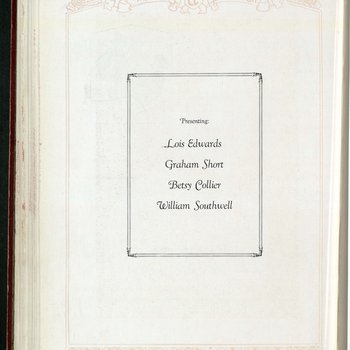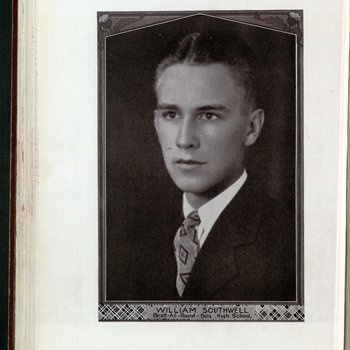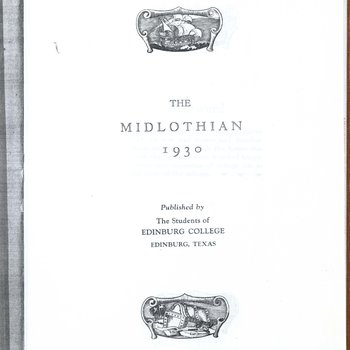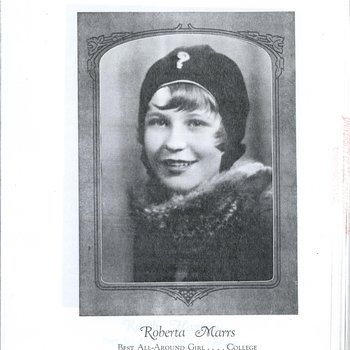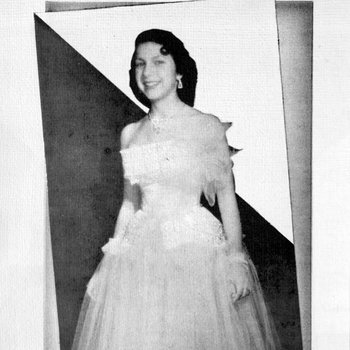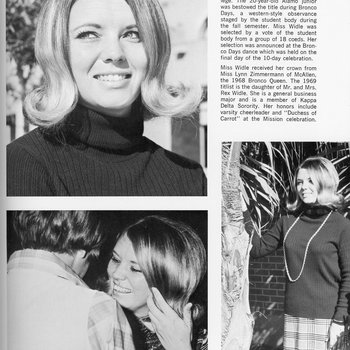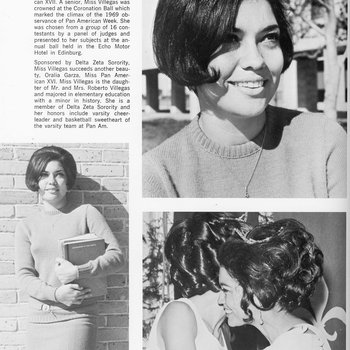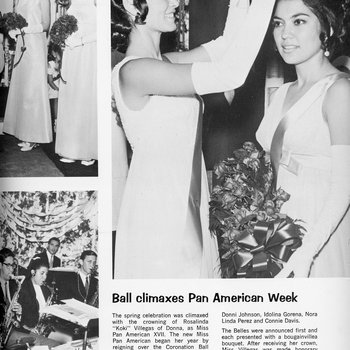University Royal Program: Context and Early Years
Edinburg
Homecoming is a longstanding tradition in the nation that allows a school's student body and the surrounding community to engage in activities leading up to a larger event, such as a school game or the coronation of the student body's homecoming court. This tradition encouraged student involvement and was incorporated into the University's experience here in Edinburg. The University's Royals Program has altered since its creation and has evolved into what it is today at the University of Texas Rio-Grande Valley. The University's Royals Program History beginnings appear with the creation of Edinburg College’s Best All-Around Boy and Girl at the Collegiate and Secondary School levels. These selections were based on the individual's outstanding performance in and outside the classroom. Listed below are portraits printed in Edinburg College’s Student Newspaper, The Midlothian, of the students selected for these titles.
Brownsville
University of Texas Brownsville students engaged in similar royals activities, including homecoming games and coronations inherited from the legacy of Brownsville High School, Brownsville Junior College, and Texas Southmost College. The celebration began as an annual carnival and dance at Brownsville High School that crowned a queen and her royal court. Sometime during the 1930s/40s the Queen's Court celebration grew to include members at the collegiate level. The annual dance, or prom, was held at TSC, and the King and Queen were photographed with their royal court amid bougainvillea decorations.
The Royals Program Moving Forward
Edinburg College’s Best-All-Around Boys and Girls was abandoned as the University began to alter to Pan American College in 1952 and to Pan American University in 1971. The University started to develop the Royals Program similar to the one ingrained today. In 1952, the title Bronco Queen was introduced to the University. The first recipient is pictured below and was rewarded during the University’s homecoming week and was eligible to any eligible student enrolled in the university and was selected by the student body. The title of Miss Pan American was also introduced by Pan American College in 1952. The chosen recipient would serve as a representative of cultural and social events during the academic year. Miss Pan America would be recognized during Pan American Week, a week-long university and community celebration of Rio Grande Valley culture.
As the campus continued to alter and grow into the University of Texas-Pan American in 1989, the Royals Program began to modify as well. Firstly, the University revised the selection of Miss Pan America in 1984 by switching from a student election to a pageant competition with five qualified judges. In addition to this, the University altered the eligibility criteria for Miss PAU by requiring competitors to be U.S. citizens. This eligibility requirement was necessary to allow the titleholder to compete in the Miss Texas Pageant, a long-time goal of the University and its Royals Program. The first student to be elected with this new process was freshmen Amy Ramirez in April of 1984. As the selection of Miss Pan America altered, the process for Homecoming Queen, or Bronco Queen, continued to follow the student election and was opened to all women registered in the University. Secondly, student organizations began to sponsor selected members' campaigns for Bronco Queen and Miss Pan America during their academic year. Students selected as Bronco Queen and Miss Pan America were supported by various school societies, sorority organizations, school spirit programs, and special-interest clubs.
UTRGV: The Royals Program Today
Since the establishment of The University of Texas Rio Grande Valley in 2015, the institution has continued to grow in size and prestige over the past few years. UTRGV has continued to follow the traditions of the royals program from the previous University of Texas-Pan America. Today, the royals program is seen during the University’s homecoming week celebrations. Following the same message as previously, full-time university students who exhibit outstanding academic performance, co-curricular involvement, contribution to the University and the community, and school spirit are selected by the Student Activities, Spirit Program, and student election to represent the student body. As in the previous years, these students are announced during the Homecoming Basketball game. Since the school’s creation, the Royals Program has abandoned some of its previous trends seen during its run with Pan American University; such as the retirement of the Bronco King and Queen title and Miss Pan American title. Instead, the University Royals Program has the Homecoming Royal title in place for all students.

